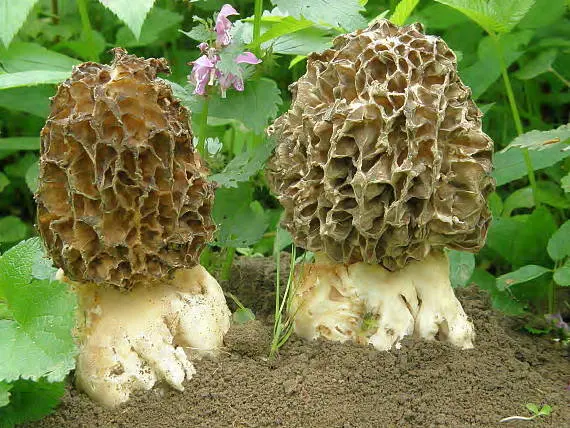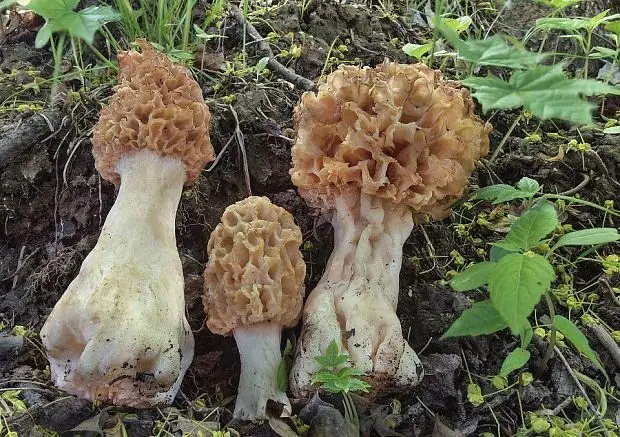Contents
Morchella crassipes (Morchella crassipes)
- Department: Ascomycota (Ascomycetes)
- Subdivision: Pezizomycotina (Pezizomycotins)
- Class: Pezizomycetes (Pezizomycetes)
- Subclass: Pezizomycetidae (Pezizomycetes)
- Order: Pezizales (Pezizales)
- Family: Morchellaceae (Morels)
- Genus: Morchella (morel)
- Type: Morchella crassipes (Thick-footed morel)

Thick-legged morel (Morchella crassipes) is a mushroom of the Morel family, belongs to rare species and is even listed in the Ukrainian Red Book.
External Description
The fruit body of the thick morel has a large thickness and size. This mushroom can reach a height of 23.5 cm. conical. The edges of the cap, especially in mature mushrooms, adhere to the stem, and deep grooves can often be seen on its surface.
The leg of the described species is thick, hilly, and can reach 4 to 17 cm in length. The diameter of the leg varies in the range of 4-8 cm. It is more often yellowish-white in color, contains uneven longitudinal grooves on its surface. The inner part of the leg is hollow, with brittle, fragile flesh. The seed material of the fungus – spores, is collected in cylindrical bags, each of which contains 8 spores. The spores themselves are characterized by a smooth surface, an ellipsoidal shape and a light yellow color. Spore powder is cream in color.
Grebe season and habitat
Thick-legged morel (Morchella crassipes) prefers to grow in deciduous forests, with a predominance of trees such as hornbeam, poplar, ash. This species gives a good harvest on fertile soils enriched with organic matter. Often grows in areas covered with moss. The fruit bodies of thick-footed morels begin to appear in spring, in April or May. It can be found singly, but more often – in groups consisting of 2-3 fruiting bodies. You can find this type of mushroom in Central and Western Europe, as well as in North America.
Edibility
The described species is considered the largest among all varieties of morels. Thick-legged morels are rare, and occupy an intermediate position between such species as Morchella esculenta and Morchella vulgaris. They are soil-forming fungi, belong to the number of conditionally edible.

Similar types and differences from them
The characteristic features of the appearance of the thick-legged morel do not allow confusing this species with any other of the Morel family.









